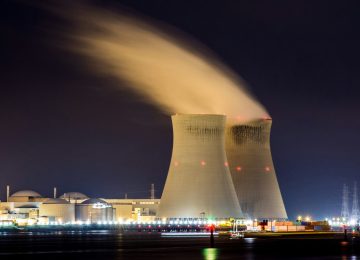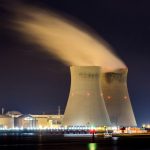AI data centers are transforming the global digital landscape by balancing the rising demand for AI services with the need
for sustainability.
The AI data center market is growing due to a few key factors: a surge in AI workloads, the proliferation of data needing big data analytics, and large government expenditures on AI infrastructure. According to Dr. Niladri Choudhuri, CEO of Xellentro and president of the Green Computing Foundation, AI-as-a-Service (AIaaS) also presents a big opportunity, allowing smaller businesses to use AI without major upfront costs.
Global landscape:
While there is no single registry, industry trackers estimate more than 12,000 data centers worldwide today.
Analysts project the AI data center market will grow from $236.44 billion in 2025 to $933.76 billion by 2030, a CAGR
of ~31%.
AI’s growing demand: By 2030, analysts expect AI to account for approximately 70% of new data center additions, though it won’t dominate all existing capacity.
AI-optimized cooling: AI-based controls, like those developed by Google’s DeepMind, can reduce data center cooling energy by as much as 40%, with ongoing savings of around 30%.
Driving the market are key innovations across industries and infrastructure.
AI workloads: High-performance computing is essential for sectors like healthcare and finance.
Renewable energy: Data centers are increasingly powered by solar, wind, and hydro.
Advanced cooling: Liquid and immersion cooling methods are boosting thermal efficiency.
Edge data centers: Smaller facilities near users reduce latency and power losses.
Circular hardware: Reusing servers and components cuts e-waste and carbon footprints.
Challenges:
High upfront investment: Specialized GPUs/NPUs, advanced cooling, and skilled labor raise entry barriers for SMEs.
Energy and water intensity: Even with efficiency gains, AI workloads remain highly resource-intensive.
Supply chain pressure: Dependence on rare earths and specialized chips complicates scaling.
Policy variability: Mechanisms such as carbon credits, RECs, or green tariffs are not globally uniform, limiting consistency in sustainability monetization.
Responses include direct-current (DC) power distribution to cut conversion losses, circular economy models for hardware reuse, and on-site renewables to stabilize supply.
Circularity, cooling, and efficiency innovations:
As part of circular hardware practices, the Open Compute Project promotes design-for-reuse, refurbishment, and redeployment of servers. This is enabling IT triage—older servers handle archival, storage, or lighter inference workloads, while new systems run dense AI training.
With chip power densities exceeding air-cooling limits, immersion and direct-to-chip cooling are becoming mainstream. Case studies show immersion can cut cooling energy by >50% and reduce water use by up to 90% in tropical climates.
Microsoft’s Project Natick proved that sealed underwater servers, or submersible servers, had 8× higher reliability than land-based units. While Microsoft ended Natick as a commercial path, its lessons in sealed, corrosion-free designs are influencing terrestrial cooling approaches.
Edge and micro data centers, often powered by local renewable microgrids, are growing as AI models shrink and inference shifts closer to users. This reduces latency and eases reliance on hyperscale builds.
The Indian perspective:
India is uniquely positioned to lead in green AI data centers, thanks to its digitalization momentum, renewable pipeline, and favorable policies.
With increased investment by various governments in AI, e.g., Andhra’s MoU with Nvidia, and other states in the anvil, the Green DC market is expected to expand multi-fold. According to Ashok Pamidi, a startup evangelist and former CEO of the NASSCOM Foundation, a similar pattern appears to be occurring in other regions of the world, particularly in the US, the UAE, and parts of Africa, which are funded by grants from philanthropic organizations, the government, and venture capitalists.
Several states (Maharashtra, Tamil Nadu, Uttar Pradesh, Telangana, and Gujarat) offer incentives such as green power tariffs and land support.
National frameworks emphasize sustainability and water efficiency.
• India’s DC capacity is projected to exceed 3 GW by 2030.
• As of July 2025, India has 119 GW of solar and 52 GW of wind capacity, enabling large-scale green PPAs for data centers.
• Immersion cooling and sealed liquid-cooled servers are relevant due to India’s hot climate.
• With BharatNet and 5G rollouts, India is expanding regional micro-data centers (DCs) to serve local needs.
Our take:
“With India poised to become a global leader in green AI infrastructure, the key question is, can this unique blend of sustainability and scale set a new global standard for digital transformation?”













